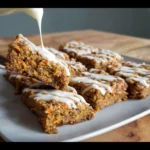When it comes to comfort food that warms the soul and fills the belly, few dishes can compete with a tender beef roast. This timeless classic is not only a staple at family gatherings and holiday dinners but also a versatile dish that can be enjoyed any time of the year. In this article, we’ll take you through everything you need to know about making a succulent beef roast, from the ingredients and cooking instructions to serving suggestions and helpful tips. Let’s get started on this culinary journey to create a roast that’s tender, flavorful, and sure to impress!
Ingredients
To create the perfect tender beef roast, you’ll need the following ingredients. Each component plays a crucial role in building the flavor profile and ensuring the roast is juicy and delicious.
- 3 lb beef roast
- 2 cups beef broth
- 4 cloves garlic, minced
- 1 onion, chopped
- 3 carrots, sliced
- 2 potatoes, diced
- 2 tsp dried thyme
- 2 tsp salt
- 1 tsp black pepper
- 2 tbsp olive oil
Instructions
Follow these step-by-step instructions to achieve a perfectly cooked beef roast that will have your family and friends coming back for seconds.
- Preheat the Oven:
Start by preheating your oven to 350°F (175°C). This ensures that your roast cooks evenly and reaches the desired tenderness. - Heat the Olive Oil:
In a large oven-safe pot, heat the olive oil over medium heat. This will be used to sear the beef, locking in its juices and flavor. - Sear the Beef Roast:
Place the beef roast in the pot and sear it on all sides until browned, about 5 minutes each side. This step enhances the flavor and creates a beautiful crust on the meat. - Sauté Garlic and Onion:
Remove the roast from the pot and add the minced garlic and chopped onion. Sauté for 2-3 minutes, allowing the aromas to develop and infuse the oil. - Add Vegetables and Seasonings:
Stir in the sliced carrots, diced potatoes, dried thyme, salt, and black pepper. These ingredients add depth and complexity to the dish. - Return the Roast to the Pot:
Place the beef roast back in the pot, nestled among the vegetables. - Add Beef Broth:
Pour in the beef broth to provide moisture and further enhance the flavor of the roast. - Roast in the Oven:
Cover the pot and roast in the preheated oven for 2.5 to 3 hours. Cook until the beef is tender and easily pulls apart with a fork. - Let It Rest:
Once done, let the roast rest for 15 minutes before slicing. This allows the juices to redistribute, ensuring each slice is moist and flavorful.
Nutrition Facts
Understanding the nutritional content of your meal is essential for maintaining a balanced diet. Here are the nutrition facts per serving of this tender beef roast:
- Calories: 380
- Protein: 35g
- Carbs: 15g
- Fat: 20g
- Fiber: 3g
How to Serve
Serving your tender beef roast can be just as crucial as the preparation process itself. The way you present your dish can enhance the dining experience, making it visually appealing and appetizing. Here are some detailed tips on how to serve this delicious centerpiece effectively:
1. Slice Thinly
The key to showcasing the tenderness of your beef roast lies in how you slice it.
- Use a Sharp Knife: Begin by selecting a high-quality, sharp carving knife. A sharp blade ensures clean cuts, which are essential for showcasing the roast’s succulent texture and rich marbling.
- Cut Against the Grain: Identify the direction of the grain in the meat, which refers to the alignment of muscle fibers. Always slice against the grain to ensure each bite is tender and easy to chew. This technique breaks up the fibers, enhancing the roast’s juiciness and flavor.
- Thickness Matters: Aim for slices that are about 1/4 inch thick. This thickness allows for a good balance between bite-sized pieces and the ability to appreciate the roast’s texture. If the roast is particularly large, consider cutting it into smaller sections to manage the slicing better.
2. Arrange on a Platter
Presentation plays a vital role in elevating the dining experience.
- Choose the Right Platter: Opt for a large, attractive serving platter that complements the roast and the overall table setting. A wooden or ceramic platter can add a rustic charm, while a sleek white plate offers a modern touch.
- Create Visual Appeal: Lay the slices in a slightly overlapping fashion, which not only looks inviting but also allows guests to see the beautifully cooked interiors. Consider fanning the slices out or stacking them in an artful manner to create height and dimension on the platter.
- Incorporate Roasted Vegetables: Arrange roasted vegetables—such as carrots, potatoes, and Brussels sprouts—around the beef. This not only adds color to the presentation but also provides a delicious contrast of flavors. For added flair, consider tossing the vegetables with a bit of olive oil, salt, and pepper before roasting to enhance their natural sweetness.
3. Garnish with Fresh Herbs
A simple yet effective way to elevate the roast’s presentation is by adding fresh herbs.
- Choose the Right Herbs: Fresh thyme, rosemary, or flat-leaf parsley are excellent choices for garnish. Their vibrant green color adds a pop of freshness, while their aromatic qualities enhance the overall flavor profile of the dish.
- Placement is Key: Scatter the herbs strategically over the roast and around the platter. You can create small bundles of herbs or individual sprigs to make the presentation look effortless and inviting.
- Add Citrus Zest: For a zesty twist, consider grating a little lemon or orange zest over the roast just before serving. The citrus aroma will brighten the dish and add a touch of sophistication.
4. Pair with Sides
To create a complete and satisfying meal, consider complementing your beef roast with a selection of delicious sides.
- Classic Comforts: Traditional sides like creamy mashed potatoes or buttery garlic bread are always crowd-pleasers. Their richness pairs beautifully with the savory flavors of the roast.
- Fresh Vegetables: Green beans sautéed with garlic or steamed asparagus add a vibrant color and fresh crunch that balances the richness of the beef. Consider drizzling them with a simple vinaigrette for an extra layer of flavor.
- Salad Options: A fresh garden salad with mixed greens, cherry tomatoes, cucumber, and a light vinaigrette can provide a refreshing contrast to the hearty roast. You might also consider a spinach salad with sliced strawberries and walnuts for a touch of sweetness.
- Sauces and Condiments: Don’t forget to offer sauces that will enhance the flavors of the roast. A rich, homemade gravy, horseradish sauce, or a tangy chimichurri can elevate each bite and provide your guests with the option to customize their plates.
By thoughtfully considering how to serve your tender beef roast, you not only enhance the aesthetics of the meal but also create an inviting atmosphere that encourages guests to savor every bite. With these tips, your roast will not only be a feast for the palate but also a feast for the eyes, making your gathering memorable and enjoyable.
Additional Tips for Perfect Beef Roast
Roasting beef can be a delightful culinary experience, but achieving the perfect roast requires attention to detail and a few insider tips. Here are some expanded recommendations to ensure your beef roast turns out perfectly every time:
Choose the Right Cut
Selecting the appropriate cut of beef is one of the most critical steps in creating a delicious roast. Different cuts offer various flavors, textures, and tenderness levels, so understanding their characteristics will help you make the best choice:
- Chuck Roast: This cut comes from the shoulder area and is known for its rich flavor and tenderness when cooked low and slow. It contains a good amount of connective tissue that breaks down during cooking, making it juicy and flavorful.
- Rib Roast (Prime Rib): A favorite for special occasions, this cut is renowned for its marbling, which contributes to its exceptional tenderness and flavor. The rib roast is typically more expensive but is often worth the investment for a memorable meal.
- Sirloin Roast: This cut is leaner than chuck or rib but still provides good flavor. It’s a versatile option if you’re looking for a roast that is not overly fatty.
- Brisket: While traditionally used for slow cooking or smoking, brisket can also be roasted. It requires longer cooking times to become tender but offers a unique flavor profile that many people love.
Understanding the cut you choose will set the foundation for your roast, so consider your preferences for flavor, tenderness, and cooking time.
Season Generously
Seasoning is essential to elevate the natural flavors of the beef. Here are some tips for effective seasoning:
- Salt: Use kosher salt or sea salt for its texture and flavor. Salting the roast generously on all sides at least 30 minutes before cooking helps draw moisture to the surface, creating a flavorful crust.
- Herbs and Spices: Consider using a blend of herbs such as rosemary, thyme, or oregano, along with spices like garlic powder, onion powder, or black pepper. Rub the herbs and spices all over the roast to ensure even flavor distribution.
- Marinades and Dry Rubs: For additional flavor depth, consider marinating your roast for a few hours or overnight. A simple marinade of olive oil, vinegar, and herbs can work wonders. Alternatively, a dry rub made of spices can form a delightful crust during roasting.
- Resting Period: After seasoning, allow the roast to sit at room temperature for about 30 minutes before cooking. This helps the meat cook more evenly.
Check for Doneness
Monitoring the internal temperature is crucial for achieving the desired doneness without overcooking your roast. Here are some specifics:
- Using a Meat Thermometer: Invest in a reliable meat thermometer. Insert it into the thickest part of the roast, avoiding bones and fat, as these can give inaccurate readings.
- Ideal Temperatures:
- Rare: 125°F (52°C)
- Medium-Rare: 135°F (57°C)
- Medium: 145°F (63°C)
- Medium-Well: 150°F (66°C)
- Well Done: 160°F (71°C)
- Carryover Cooking: Keep in mind that the roast will continue to cook after being removed from the oven due to residual heat. It’s advisable to take the roast out of the oven when it’s about 5 degrees (3°C) below your target temperature, allowing it to rest before carving.
Adjust Cooking Time
Each roast is unique, so understanding how to adjust cooking time based on size and cut is vital:
- General Rule of Thumb: A larger roast will need more time to cook, while smaller cuts will cook faster. As a general guideline, you can estimate about 20 minutes per pound at 325°F (163°C) for medium-rare.
- Oven Calibration: Ensure your oven is correctly calibrated. An inaccurate oven can lead to undercooked or overcooked meat. Consider using an oven thermometer to verify the accuracy.
- Cooking Methods: Different cooking methods can also affect timing. For instance, starting your roast at a high temperature (around 450°F or 232°C) for the first 20 minutes can help create a crust before lowering the temperature to finish cooking.
- Monitoring: Always keep an eye on your roast, especially toward the end of the estimated cooking time. Investing in a good meat thermometer allows you to check the internal temperature without opening the oven door, which can cause heat loss.
By following these detailed tips, you will be well on your way to mastering the art of roasting beef. Whether for a family dinner or a special occasion, your perfectly cooked beef roast will be sure to impress!
FAQs
1. Can I use different vegetables in the roast?
Absolutely! Feel free to experiment with different vegetables like parsnips, turnips, or sweet potatoes to suit your taste preferences.
2. How do I store leftovers?
Store leftovers in an airtight container in the refrigerator for up to 3 days. Reheat gently to avoid drying out the meat.
3. Can I make this roast in a slow cooker?
Yes, you can adapt this recipe for a slow cooker. Sear the beef and sauté the vegetables on the stovetop, then transfer everything to the slow cooker. Cook on low for 8 hours or until tender.
4. What wine pairs well with a beef roast?
A full-bodied red wine like Cabernet Sauvignon or Merlot pairs beautifully with the rich flavors of a beef roast.
Conclusion
Creating a tender beef roast is a rewarding experience that brings joy to both the cook and those who get to enjoy the meal. With the right ingredients, careful preparation, and a little patience, you can create a dish that is not only delicious but also memorable. Whether it’s a special occasion or a cozy family dinner, a beef roast is sure to be a hit. Enjoy the process, savor the flavors, and relish in the satisfaction of serving a meal that everyone will love. Happy cooking!
Print
Tender Beef Roast Recipe
Ingredients
- 3 lb beef roast
- 2 cups beef broth
- 4 cloves garlic, minced
- 1 onion, chopped
- 3 carrots, sliced
- 2 potatoes, diced
- 2 tsp dried thyme
- 2 tsp salt
- 1 tsp black pepper
- 2 tbsp olive oil
Instructions
- Preheat the Oven:
Start by preheating your oven to 350°F (175°C). This ensures that your roast cooks evenly and reaches the desired tenderness. - Heat the Olive Oil:
In a large oven-safe pot, heat the olive oil over medium heat. This will be used to sear the beef, locking in its juices and flavor. - Sear the Beef Roast:
Place the beef roast in the pot and sear it on all sides until browned, about 5 minutes each side. This step enhances the flavor and creates a beautiful crust on the meat. - Sauté Garlic and Onion:
Remove the roast from the pot and add the minced garlic and chopped onion. Sauté for 2-3 minutes, allowing the aromas to develop and infuse the oil. - Add Vegetables and Seasonings:
Stir in the sliced carrots, diced potatoes, dried thyme, salt, and black pepper. These ingredients add depth and complexity to the dish. - Return the Roast to the Pot:
Place the beef roast back in the pot, nestled among the vegetables. - Add Beef Broth:
Pour in the beef broth to provide moisture and further enhance the flavor of the roast. - Roast in the Oven:
Cover the pot and roast in the preheated oven for 2.5 to 3 hours. Cook until the beef is tender and easily pulls apart with a fork. - Let It Rest:
Once done, let the roast rest for 15 minutes before slicing. This allows the juices to redistribute, ensuring each slice is moist and flavorful.
Nutrition
- Serving Size: one normal portion
- Calories: 380
- Fat: 20g
- Carbohydrates: 15g
- Fiber: 3g
- Protein: 35g






